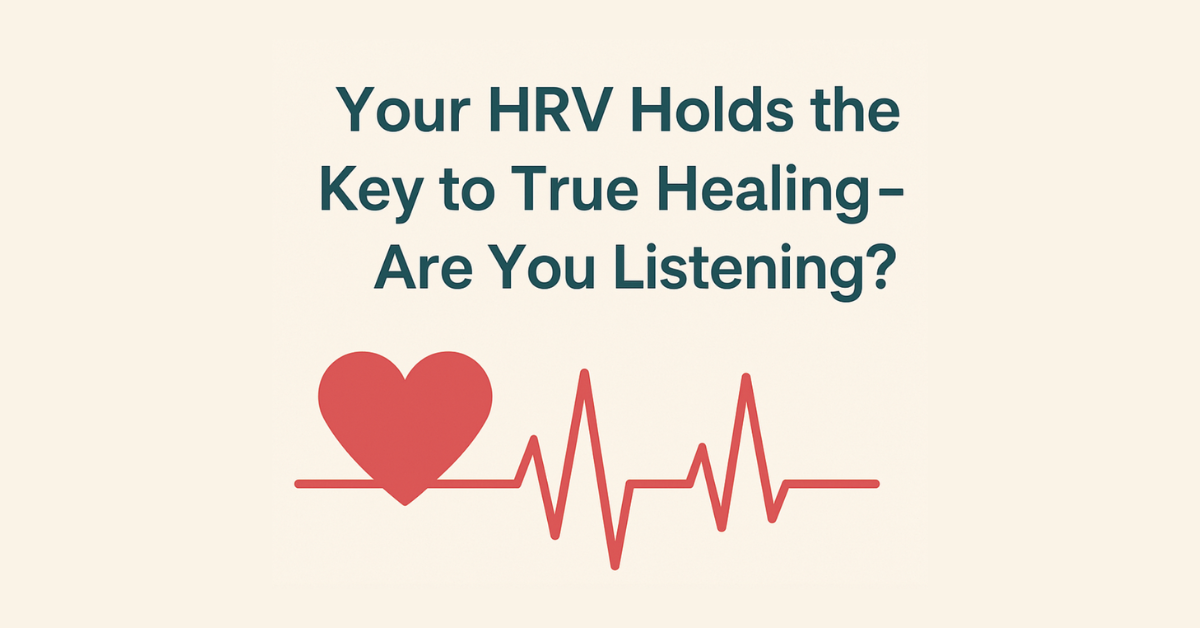

01
Apr
Your HRV Holds the Key to True Healing – Are You Listening?

Have you ever met someone who’s 55 but moves, thinks, and feels like they’re in their 30s? Or maybe the opposite—someone in their 40s who’s always tired, achy, and worn down, like their body’s aging faster than it should?
That’s the difference between chronological age (the number on your birth certificate) and biological age—how your body is actually functioning. And one of the most powerful ways to peek behind the curtain of your true health is by looking at something called HRV, or Heart Rate Variability.
What Is HRV—and Why Should You Care?
HRV measures the time variation between your heartbeats. Sounds simple, but it’s actually a goldmine of information. Contrary to what you might think, your heart isn’t supposed to beat like a metronome. A healthy heart has flexibility—variation—because it’s constantly adjusting to your environment, emotions, and internal cues.
The greater the variability (within a healthy range), the more resilient and adaptable your body is. That’s a sign of a nervous system that knows when to power up… and when to relax.
When HRV is low, your body is telling you, “Hey, I’m stuck in stress mode.” This can show up as fatigue, poor sleep, slow recovery, anxiety, inflammation—you name it.
Your Nervous System: The Gas and the Brakes
To really understand HRV, we have to talk about your autonomic nervous system—specifically the two main branches:
- Sympathetic Nervous System (SNS): Think of this as your gas pedal—fight, flight, go, go, go.
- Parasympathetic Nervous System (PNS): This is your brake pedal—rest, digest, repair.
Ideally, these two systems are in balance. Your body hits the gas when it needs to deal with something (like a tough workout or a stressful meeting), and then it should hit the brakes so you can recover, heal, and sleep well.
But most people I see? They’re flooring the gas pedal all day long.
Chronic stress, poor nutrition, overwork, and hidden imbalances can keep you locked in sympathetic overdrive. That’s when HRV drops… and aging accelerates.
HRV as a Window Into Healing
When I work with clients, HRV gives me a real-time look at how their body is coping. It’s one of the best indicators of whether healing is actually happening—not just symptom suppression.
You might feel like you’re managing your stress, but if your HRV is low, your body might be telling a different story.
And here’s the empowering part: HRV can improve. Your body can shift. But first, you need to know what’s keeping it stuck.
Enter Nutrition Response Testing®: Getting to the Root
This is where Nutrition Response Testing® comes in. It’s a non-invasive way to tap into your body’s own communication system and figure out what’s interfering with healing.
I’ve had clients with low HRV because of heavy metal toxicity, hidden food sensitivities, or even past infections they never fully cleared. Others are simply running on nutrient fumes—low in key minerals and vitamins that support the nervous system.
With NRT, we can pinpoint the root cause and create a personalized nutrition and supplement plan to help the body rebalance.
And as the body clears interference and gets the right support? HRV goes up. Sleep improves. Energy returns. Healing starts happening—organically and deeply.
The Bottom Line
If you’ve been feeling off and can’t quite explain why—or if you’re doing “all the right things” but still not seeing results—your HRV might be the missing piece.
Your body’s trying to tell you something. The question is: are you listening?
For more information, call 607-277-1964 or email [email protected]
